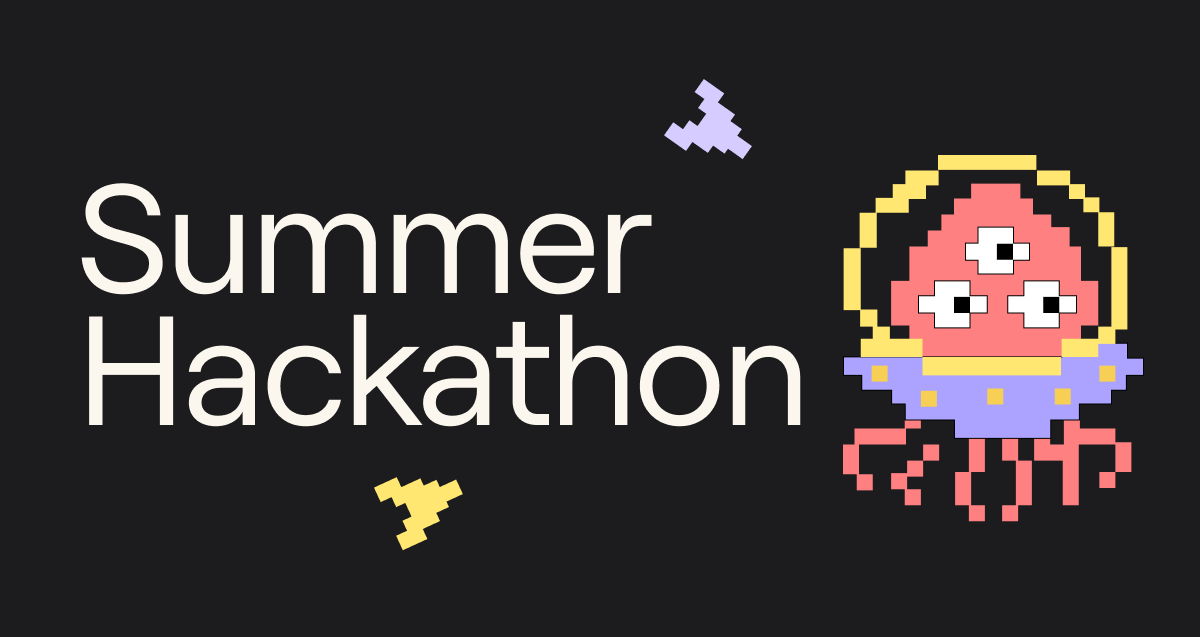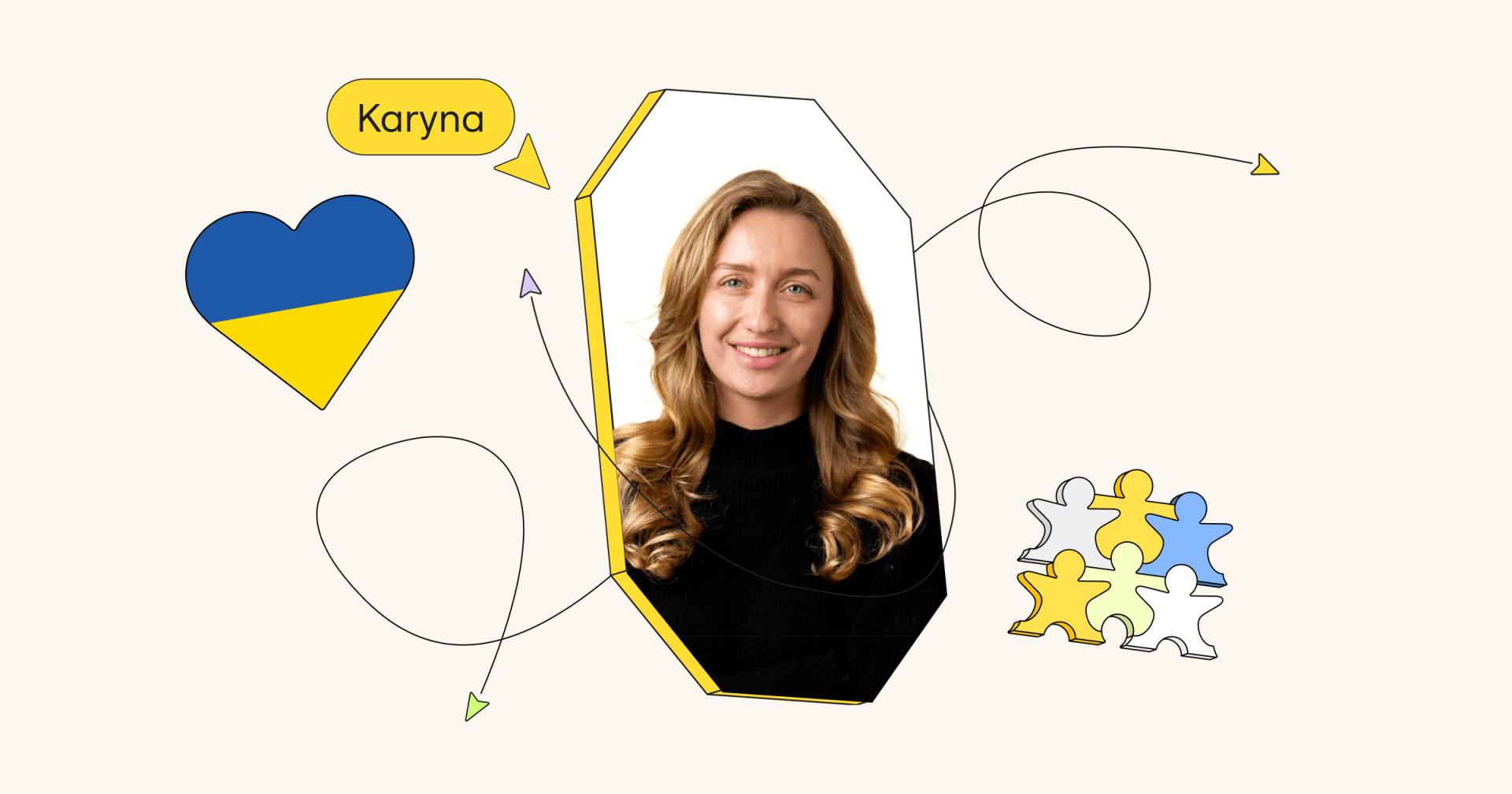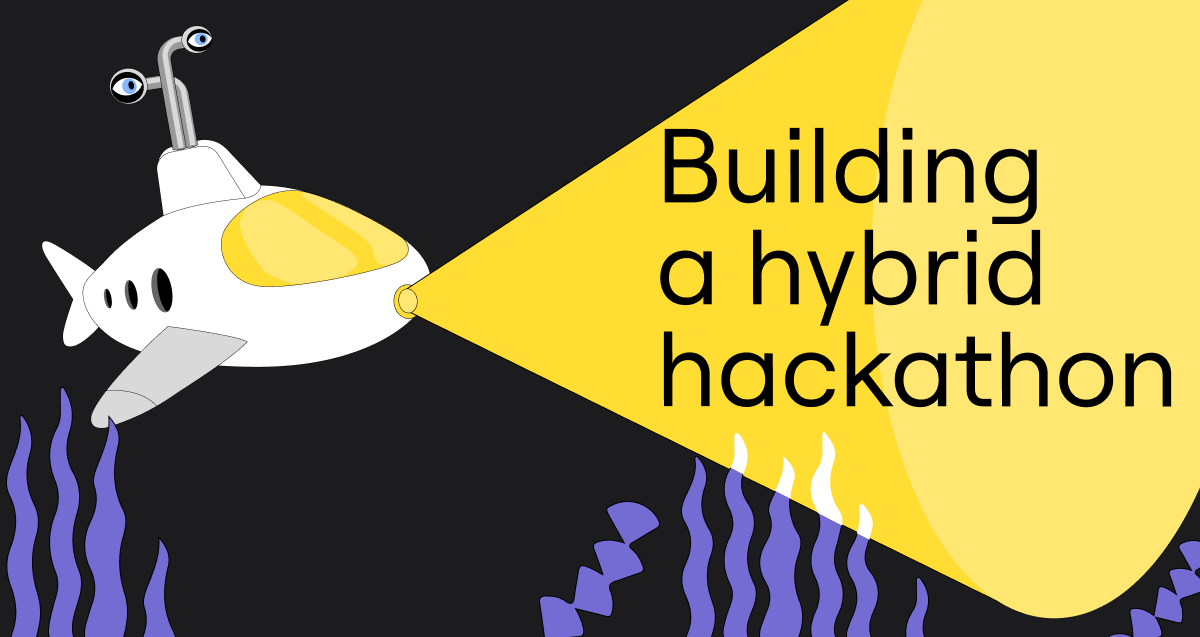To hack or not to hack?
Unfamiliar with a hackathon? Here’s the deal: a hackathon is a design sprint-like event, in which developers and others involved in software development — such as designers, product managers, and domain experts — collaborate intensively on software projects. This is a chance for participants to get together with colleagues from all over the company who either have an idea similar to yours, or who love your idea, and want to collaborate on a first iteration in a short period of time. You don’t have to be a coder to join in on the fun: this is a company-wide event, and anyone can get involved by joining teams and supporting them with their organizing, research, or even presentation skills.
The goals of a hackathon at Miro? To hack, build and recharge with some creative positive energy!
Operation: Retro Arcade
This year, Miro hosted an internal hackathon from June 7–10 under the theme “Retro Arcade.” Miro’s brilliant Brand team designed a Miro board inspired by an arcade game that helped illustrate different stages and aspects of the hackathon. Some teams used this theme to inspire their projects within the Miro tool.
hackathon-june-2022-miro-board
With the theme in place and expectations laid out, it was time to get our hackathon off the ground!
Step 1: Ideation
Two weeks before the hackathon began, a Miro board was shared with the entire company to give folks time to brainstorm, peruse the judging criteria and form their teams. One section of the board was dedicated to “Hackathon Ideas”, where participants could outline the problem they were solving for, state their goals, name what success would look like and any potential roles they needed filled on their team.
The hackathon planning team also hosted two Pitch Sessions during these two ideation weeks, which anyone could sign up for. These sessions had over 100 Mironeers join to learn more about their colleagues’ ideas, ask any lingering questions and sometimes join a team on the spot!
Step 2: Finalize the teams
1_styoea3zhdlgdkrwnh35ow
The Hackathon Miro board also contained a section for teams to come together, state their topic, name their team lead and ask for team members. This gave Mironeers a great opportunity to see any missing gaps and get involved. By the end of Friday before the hackathon, the teams were formed, their members from all over EMEA with a focus on Amsterdam, Yerevan and Berlin.
Step 3: Hack away
Many teams already knew what they’d be dedicating themselves to during the hackathon, but for those that needed more help, they could take advantage of the Hackathon Mini Design Sprint Sessions, hosted by Jake Knapp, the inventor of the Design Sprint himself. Under Jake’s leadership, Mironeers worked together to Sketch, Decide, Prototype and Test throughout two sessions on the first days of the Hackathon. This allowed them to use their time in a more structured way to ensure their results were clear and obtainable, and set them off on the right foot.
And with that, we were off! All participating teams had 3 full days to hack, after which they would submit their pitch for pre-selection. Only 14 teams would move forward to present their final pitches to the judges.
If teams ever got stuck during the hackathon, they could find inspiration throughout the Miro hackathon board or they could reach out to a team of 12 mentors who signed up to make themselves available to answer any questions in their respective specialties.
In addition to Mironeers, this year’s hackathon also featured some very special participants: two teams of 15 and 16-year old students from the International School of Amsterdam! It just so happened that their school was hosting a “Week in the Workplace” at the same time as our hackathon, so we welcomed the students to join. Both teams were provided with Mironeer Mentors, who helped guide them through the processes. Both teams presented skillfully to a room full of Mironeers and judges during the Final Pitch session.
Step 4: Pitch and celebrate
From this year’s Retro Arcade hackathon, we gathered some pretty cool statistics:
- 122 Mironeers participants
- 35 registered teams
- 35 demos
- 16 final pitches
- 12 mentors
- 8 high school participants
- 6 awards
- 6 judges
The final pitches and celebration parties for this hackathon took place at 3 of our hub offices: Amsterdam, Yerevan and Berlin. Each team would be judged on the following criteria: user impact, technical merit, and creativity and originality. We all had an amazing time hearing the remaining 16 teams pitch their hacks, and the judges certainly struggled to decide on the winners. In the end, 6 teams’ projects were celebrated under the following categories:
- CEO Award
- Tech Uplift Award
- Engagement Award
- KISS (Keep it Simple Stupid) Award
- Customer Choice Award
- Miro Choice Award
We all celebrated together afterwards in the spirit of the Hackathon theme with arcade machines, food and drinks, music and a whole lot of candy!
Conclusion
This year’s hackathon at Miro was a total success with lots of learnings and we can’t wait to see the teams’ ideas come to life. In the meantime, preparation is already underway for another hackathon, and you know what that means: time to be creative and change the future of work for the better together!



